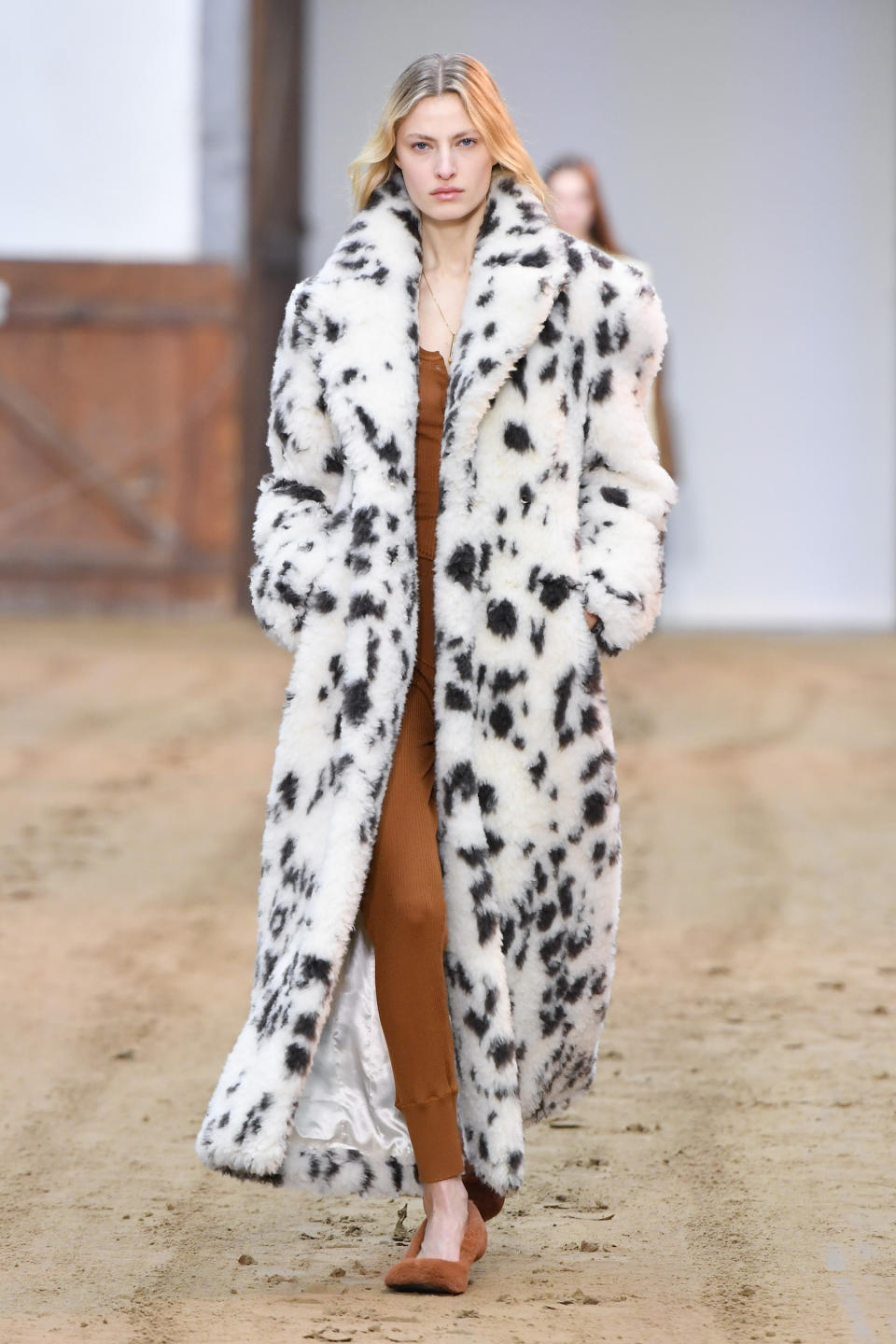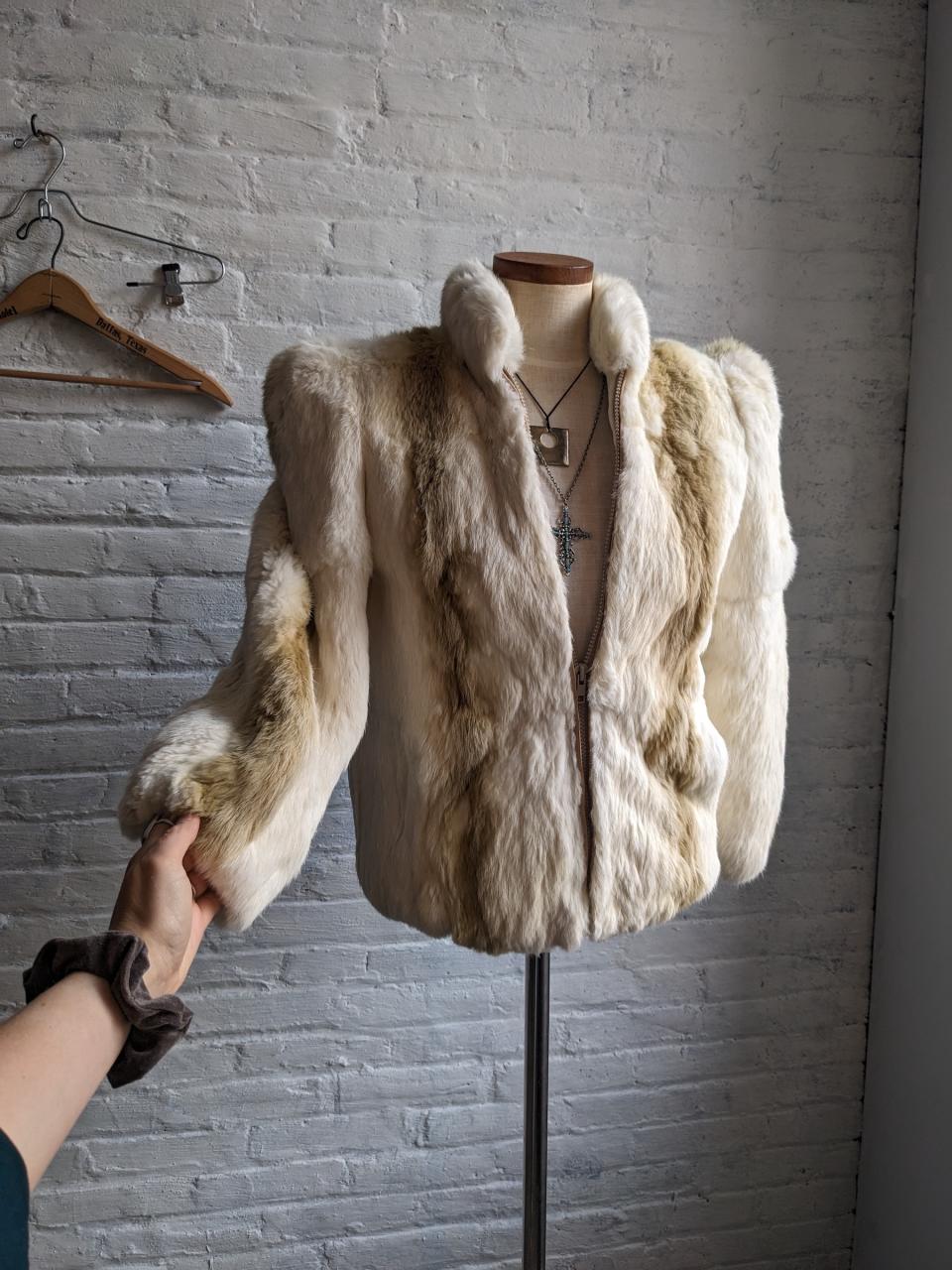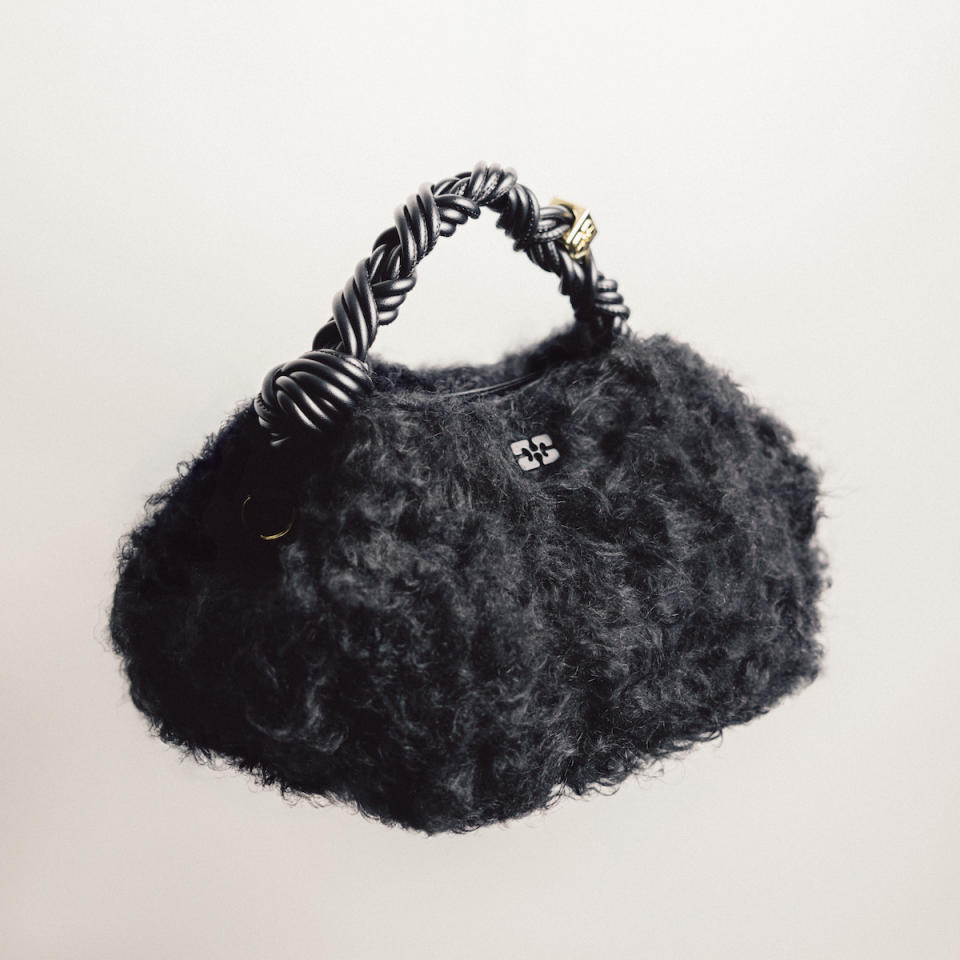Is the ‘Mob Wife’ Trend Maximalist Glamour or a Green Faux Pas?

Fur. Leather. Leopard. Maximalists, unite: the antithesis to the “clean girl” trend is here.
The viral “Mob Wife” TikTok trend—which has garnered more than 150 million searches on the social media app in a mere few weeks—is a sort of “mafiosa cosplay,” as the New York Times wrote, à la “The Real Housewives of New Jersey.” Think smoky eyes, stiletto nails and big hair akin to Sharon Stone in “Casino” mixed with chunky gold jewelry and animal print fits.
More from Sourcing Journal
'Mob Wife' and 'Librarian-Core' Trends Dominate at Project, Magic
Material World: Leather from Leaves, Circ Partners with Pyratex
Inspired by Italian-American femme fatales, the mob wife aesthetic is outpacing quiet luxury, according to Kayla Marci, senior fashion and retail analyst at Edited. Millennials—being more familiar with the pop culture gangsters emulated in the trend—are driving interest in the theme, with 25 and 34-year-olds accounting for 51 percent of Pinterest searches. For reference, Pinterest searches for “fur coat outfit” were up 457 percent in January, per research from Boohoo.
“Typically, when a market is saturated by a trend, consumer fatigue sets in, and tastes shift in the opposite direction. The current trend cycle is dominated by social media, where trends emerge from TikTok at hyper-speed and fragment into micro-aesthetics, causing several clashing fashion narratives to juxtapose; such is the case for both minimalism and maximalism coexisting in 2024,” Marci told Sourcing Journal. “However, buzzwords like ‘stealth wealth’ and ‘quiet luxury’ overwhelming fashion last year has become a conduit for a return to over-the-top glamor, which the mob wife aesthetic personifies.”
And the linchpin of the trend is a fur—real or faux—coat.
“The fur coat is synonymous with luxury and glamour and is a staple in the characters’ wardrobes from ‘The Sopranos’ and ‘Casino,’ which consumers are trying to emulate through this aesthetic,” Marci explained. “It also boasts appeal outside this trend, seen as a classic winter item, offering longevity.”
Edited research found that the arrival of faux fur outerwear between August and January increased 5 percent year-over-year, with pre-fall 2024 collections indicating a printed pelt-heavy winter this year. Stella McCartney even showcased a very “Cruella de Vil” coat at last year’s Paris Fashion Week.

Analysts, including Marci, credit the 25th anniversary of HBO’s mafia-centric hit, “The Sopranos,” as an accelerator of Gen Z’s interest in fur. In all fairness, it’s hard not to think of fur fits without picturing the wives and “goomars” of the crime drama series; there are entire Reddit threads dedicated to Carmela Soprano and her coat.
And Carmela herself—the actress Edie Falco—isn’t exactly thrilled with the resurgence of fur.
“’The Sopranos’ had nothing on the violence of the fur industry, which gasses, electrocutes and peels the skin off animals while they’re still alive,” Falco said on behalf of the animal rights organization PETA. “No matter if it’s new or vintage, torture doesn’t belong in our closets. If you’re after the trending Carmela Soprano-inspired’ mob wife’ aesthetic, I suggest grabbing one of the many faux furs out there and leaving animals out of it.”
Unsurprisingly, the Humane Society of the United States agrees with PETA.
“To disassociate themselves from the animal cruelty and high environmental impact of fur production, some TikTok’ mob wives’ are quick to point out that their fur is used or vintage. While this could be perceived as better than buying new fur, it still perpetuates the idea that fur products have value and relevance,” PJ Smith, fashion policy director for the nonprofit, said in a blog post. “If people see someone on TikTok wearing fur, used or not, there’s a risk that it could lead to the purchase of new animal fur products, creating a cycle of fashion that allows for fur to be viewed as acceptable.”
To some, even faux fur isn’t a better option.
“Plastic or other synthetic materials are not great, but with faux fur, it’s even worse than glitter because it really sheds—even high-quality plastic fur, you’re just shedding plastic,” Roni Gamzon, co-founder and CCO of BioFluff, told Sourcing Journal, quick to note that this is not a scientific claim.
And her logic checks out: faux fur is made of petroleum-based synthetic polymers. Primarily comprised of acrylic and polyester fabrics, microplastics are inherently being shed. In fact, a 2016 study published in Environmental Science & Technology found that synthetic jackets released an average of 1,175 milligrams of microfibers when washed. And those microfibers then travel to local wastewater treatment facilities, where up to 40 percent of them enter the Earth’s waterways, where fish consume the microplastics before humans consume the fish.
In that regard, would genuine fur be considered more sustainable?
“A lot of people I see on TikTok are finding their grandma’s coats and, while vintage fur is better than faux fur because you’re not shedding plastics everywhere, it’s not as natural as people think,” Gazmon said, referring to the toxic chemicals and preservatives—including formaldehyde and ammonia—used to process fur. Not to mention the carbon emissions and waste runoff fur farms produce; in 2015, 31 fur farms in Lithuania were found in breach of waste disposal regulations, causing some serious ecological damage, according to the Fur Free Alliance.
And these stats fuel the fire of fur farming bans sweeping the world. There’s a disconnect, though, in relation to used fur. While vintage fur garments are more sustainable than new pieces, that doesn’t make them actually sustainable. Nonetheless, Google searches for “vintage fur coat” spiked 300 percent year over year (YOY).
“Interest in vintage fur has increased, fueled by consumer demand for archival pieces and sustainability. However, when a trend explodes on TikTok, consumers want to participate instantly to stay ahead of the curve,” Marci said. “Sourcing vintage fur is often time-intensive and expensive, making the availability of faux styles at fast fashion brands appealing to this see-now, buy-now mentality.”
And while sustainable shoppers are flocking to resale apps like Poshmark to score those pre-sourced vintage pieces, the price, as Marci said, is quite high.
Poshmark has seen a 101 percent increase in “fur coat” searches YOY, with sales increasing 70 percent, and an 81 percent increase in “faux fur coat” searches YOY, with sales rising 69 percent, according to Chloe Baffert, head of merchandising and curation at Poshmark. And items containing the phrase “mob wife” in the title or description increased 2,100 percent month over month.
One seller in particular, @shoplaterdudes, has garnered more than 200,000 followers over the past four years. The self-proclaimed jacket queen noted that black and brown midi trench length is particularly hot at the moment, as well as animal print and the Penny Lane look. She said she stocks everything—from vintage genuine fur to plastic pieces “with a sprinkle of some secondhand modern pieces.”

Her last two mob wife-inspired coats have sold for $143 and $125, respectively. They were both made of polyester and polyurethane, marketed as “vegan” options. The genuine fur pieces are allegedly sourced from the 1970s and ’80s and are currently listed at prices ranging between $429-$1,399.
“The mob wife trend look sort of originated in the ’70s and ’80s when we did see a lot of fur, but so much has changed since then; consumers are just more aware of how products are being made, especially in regard to fur,” Smith told Sourcing Journal.
Not to mention, the idea of what luxury means has changed a lot in the past 50-plus years, he continued.
“I know that there’s Real Housewives still wearing fur, but for the most part, we know that fur purchases aren’t really luxurious in the sense of what luxury used to mean,” Smith said. “Now, it’s associated with sustainability—what’s innovative, what’s ethical, and that’s been an evolving idea of what luxury means.”
With that in mind, material innovators are taking advantage of this and leaning into the trend.
Although Spiber cannot directly attribute this to the viral trend, short-hair and long-hair fur-like fabrics made with the biotech firm’s Brewed Protein fiber have “garnered considerable attention” from a variety of brands, notably those in the premium and luxury sectors, in the past year.
“While Brewed Protein fiber itself is free from petrochemicals and animal products, it maintains a unique yet authentically luxurious touch as it is essentially a protein material like that of silk, cashmere and wool,” Ayana Nakajima, global communication specialist at Spiber, told Sourcing Journal. “Our impression is that Spiber’s fur-like fabrics could provide a compelling solution for those seeking an animal-free and petrochemical-free alternative.”
For BioFluff, the timing of the mob wife trend was simply kismet.

The startup’s plant-based fur alternative, Savian, hit the runway earlier this month with Ganni at Copenhagen Fashion Week through the Danish brand’s Fabrics of the Future program. Stella McCartney showcased the material—made from renewable plant fibers and agricultural waste—at COP28 at the end of last year.
“From Day One, the traction has been insane and there are [still] a lot of things in the pipeline,” Gazmon said. “And every time we do something, it gives brands more confidence—we don’t need to convince just a designer or a sustainability person, we almost need to convince everyone at a brand to work with us. So every little bit helps, like this trend.”

